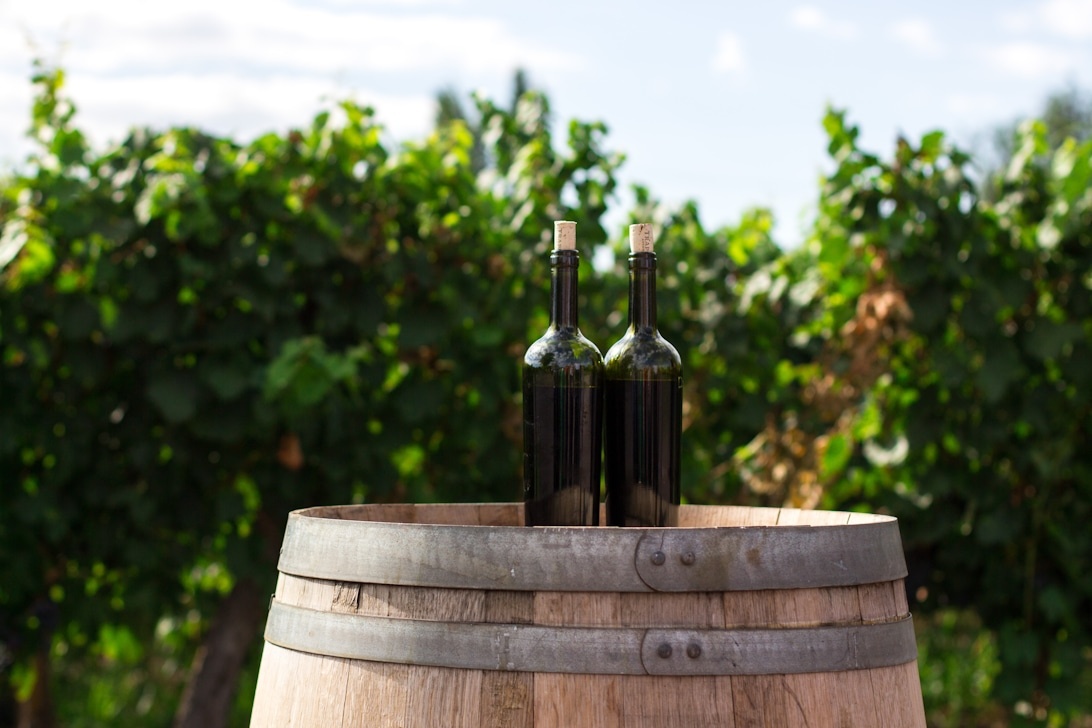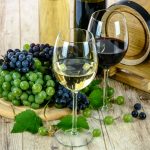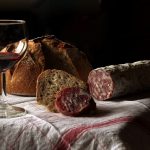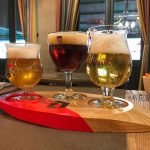The global beverage landscape is shifting, and one of the most significant trends gaining momentum is the rise of low-alcohol and no-alcohol (NOLO) wines. Driven by changing consumer attitudes towards health, wellness, and mindful consumption, these lighter options are moving from a niche category to a prominent market segment. Let’s explore why these wines are becoming so popular and what it means for the future.
What exactly are low-alcohol wines?
Before diving deeper, it’s helpful to understand the terminology, although definitions aren’t universally standardized and can vary significantly by country. Generally, ‘low-alcohol’ wine refers to beverages with an alcohol by volume (ABV) significantly lower than traditional wines (which often range from 12% to 15% ABV). Some common classifications, though subject to regional differences, include:
- De-alcoholized wine: Typically contains 0.5% ABV or less.
- Low-alcohol wine: Often falls between 0.5% and 1.2% ABV in some regions. However, thresholds differ; for instance, as detailed by Wine Australia, beverages must be below 1.15% ABV to be labelled ‘low alcohol’ Down Under.
- Reduced-alcohol wine: Contains less alcohol than a standard counterpart but more than the ‘low-alcohol’ threshold, often sitting below 11% ABV.
It’s important to note these regional regulations, like those in Australia stipulating products under 4.5% ABV cannot legally be called ‘wine’ without a qualifier like ‘reduced alcohol wine’. This careful labelling helps manage consumer expectations in a diverse global market.
Why the surge in popularity?
Health and wellness focus
A primary driver is the global shift towards healthier lifestyles. Consumers are increasingly mindful of their alcohol intake, seeking ways to moderate consumption without complete abstinence. Low-alcohol wines align with this, often offering fewer calories, sometimes reduced carbohydrates, and lower alcohol content, appealing to those managing weight or seeking ‘better-for-you’ options. This mindful drinking movement is significant, with studies showing a strong interest in reducing alcohol consumption. Research reviewed by MDPI highlights health improvement as a key motivator for nearly half of sober-curious consumers. Furthermore, data shared by the Food Institute indicates a strong desire among Gen Z (55%) and older adults (41% over 55) to cut back on alcohol.
Economic and regulatory factors
Government policies and taxation structures also play a role. In regions like the UK, alcohol duty is often linked to ABV. As reported by The Guardian, wines with lower alcohol content attract significantly less duty (£1.49 for 8% ABV vs. £2.35 for 11% ABV in their example), making them more affordable for consumers. This economic incentive can benefit both producers and drinkers. Public health bodies, including the World Health Organization, also encourage the availability of lower-strength options as part of broader harm reduction strategies, further legitimizing the category.
Shifting social norms and inclusivity
Social dynamics are evolving, with excessive drinking becoming less acceptable in many circles. Low-alcohol options allow individuals to participate in social occasions involving alcohol while staying in control, managing driving responsibilities, or simply preferring a lighter experience. As highlighted by SevenFifty Daily, retailers increasingly recognize the importance of inclusivity, offering NOLO choices for customers abstaining for various reasons, such as pregnancy, medication, religious beliefs, or personal preference. This ensures everyone feels welcome and catered for.
How low-alcohol wines are made
Natural approaches in the vineyard and winery
Some wines are naturally lower in alcohol due to specific grape-growing and winemaking choices. Viticultural techniques play a key role; for example, ‘managing the vine canopy’ involves controlling leaf cover to regulate sun exposure on the grapes, which helps limit how much sugar develops. Harvesting grapes earlier, before they reach peak ripeness and sugar concentration, is another common method, as less sugar means less potential alcohol after fermentation. Certain grape varieties, particularly those grown in cooler climates like German Riesling or some styles of New Zealand Sauvignon Blanc, are naturally suited to producing vibrant wines with lower ABV. As Wine Spectator notes, the NZ Lighter Wines initiative, started back in 2008, specifically focused on research to produce wines naturally at 10% ABV or under by leveraging these techniques. Interrupting fermentation before all sugar converts to alcohol is another technique, often resulting in slightly sweeter styles like Moscato d’Asti or Brachetto d’Acqui.
Technological alcohol removal
For wines requiring more significant alcohol reduction, or to create zero-alcohol versions, technology comes into play. Post-fermentation methods are used to gently remove alcohol from standard wine, aiming to preserve the original character as much as possible. Common techniques, discussed in resources like IntechOpen, include:
- Spinning Cone Columns: Imagine a sophisticated machine that uses vacuum and gentle warmth to separate the wine into different layers based on volatility. Alcohol, being quite volatile, can be removed, while delicate aroma compounds can often be captured and carefully added back.
- Reverse Osmosis: This method uses very fine filters, essentially pushing the wine against a membrane that allows water and alcohol molecules to pass through, but retains the larger flavour and colour compounds. The alcohol-water mix is then distilled to remove alcohol, and the water is blended back with the concentrated wine components.
- Vacuum Distillation: Similar in principle to spinning cones but using a simpler setup, this process lowers the pressure dramatically. This allows alcohol to evaporate at much lower temperatures (around 25-30°C or 77-86°F) than normal boiling, minimizing heat damage to the wine’s sensitive flavours.
These technologies are constantly improving, addressing earlier criticisms about compromised taste in dealcoholized wines. Producers like Australian Vintage are investing heavily in research, supported by government grants, to enhance flavour and mouthfeel in NOLO wines, showcasing the industry’s commitment.
Market landscape, key players, and future outlook
Market dynamics and consumer views
The NOLO market is experiencing impressive growth, significantly outpacing the traditional wine sector in many areas. Recent IWSR data showed low-alcohol wine volume grew by a robust 8% across ten key markets in 2023, with the US leading this charge. No-alcohol wine also grew globally at 7%, though it faces more significant challenges related to taste perception and availability compared to its low-alcohol counterpart. Remember, these figures depend on how ‘low’ and ‘no’ are defined in each market. NielsenIQ figures highlighted the scale, with the total NOLO category (including beer and spirits) reaching $3.1 billion in US off-premise sales in the year leading up to September 2021. More recently, Beverage Daily reported UK non-alcoholic wine spending hit £66.2m, a 50% increase over three years.
Despite this growth, consumer perception remains a hurdle. Historically, low-alcohol wines were often seen as lacking in flavour. While quality has dramatically improved thanks to better technology and winemaking, negative past experiences can create skepticism. Interestingly, blind tastings often show consumers struggle to differentiate between standard and well-made low-alcohol wines, suggesting perception is heavily influenced by labelling and expectations. Price can also be a factor; the extra production steps mean NOLO wines aren’t always cheaper, yet some consumers expect them to be. Education is crucial – retailers and producers are working to manage expectations, highlight quality improvements, and showcase these wines as distinct, enjoyable offerings rather than mere imitations.
Notable examples and regional highlights
The market now boasts diverse and high-quality options. German producers like Leitz are acclaimed for their Eins Zwei Zero range, particularly the Sparkling Riesling, praised by outlets like Food & Wine for its dryness and minerality. New Zealand excels with lighter Sauvignon Blancs, such as the Brancott Estate Flight Song (9% ABV) or the Giesen 0% Marlborough Sauvignon Blanc. Major brands are also entering the space, like Kendall-Jackson with their Avant Lower Calorie Chardonnay, which uses a blend of dealcoholized and standard wine to maintain flavour. In the sparkling category, Noughty Alcohol-free Sparkling Chardonnay offers an organic option. Celebrity-backed ventures, like Kylie Minogue’s 0% sparkling rosé, have achieved significant success. As noted by The Drinks Business, this brand utilizes innovative fermentation techniques involving green tea infusion instead of traditional dealcoholization, selling over a million bottles and becoming a UK market leader.
Regionally, Germany stands out as Europe’s largest market for alcohol-free wines, driven by health consciousness and advanced production techniques like vacuum dealcoholization, as highlighted during the wine2wine Business Forum. Australia and New Zealand are also at the forefront, leveraging technological investment (like spinning cone expertise in Australia) and favourable cool climates ideal for grapes with naturally lower sugar potential. The US market is identified by IWSR as a major growth driver, particularly for low-alcohol options, reflecting a strong consumer trend towards moderation and wellness.
Future perspectives
The trend towards low and no-alcohol wine shows no signs of slowing down. Continued innovation in production techniques, aiming to further bridge the flavour gap, especially for complex still red wines, will be crucial. As consumer awareness grows and quality consistently improves, NOLO wines are expected to capture a larger share of the overall wine market, potentially mirroring the success seen in the alcohol-free beer sector. For the wine industry, this represents a significant opportunity to cater to evolving consumer preferences, promote responsible consumption, and reach new demographics seeking balance and wellness in their beverage choices. Market forecasts, like those from The Business Research Company, predict continued strong growth for the low-alcohol beverage sector well into the future, potentially up to 2029 and beyond, solidifying NOLO’s place as an enduring category.







